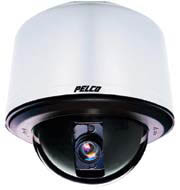Integrator's Video Surveillance Install Helps Curb Crime At USC
By Mike Monocello, Business Solutions magazine.
An integrator explains how its multimillion-dollar video surveillance installation keeps off-campus students safe at the University of Southern California
As a solutions provider, one of the keys to your success is being able to highlight the ROI and/or payback of the solutions you sell. However, in some cases, the ROI isn’t directly tied to a dollar amount but rather something more important. This is the case with a video surveillance installation that integrator Convergint Technologies performed for the University of Southern California (USC).
 The university, located in the heart of Los Angeles, was experiencing every security problem you can imagine with its off-campus students, including burglary, robbery, shooting, theft, and rape. According to Brian Sweet, business development manager for the integrator, there’s a perception in the local community that USC students have a lot of money, so they become targets. Indeed, he says that within the local community, you’ll find gangs and criminals who view the students as easy targets. Therefore, Convergint was called to help reduce these crimes.
The university, located in the heart of Los Angeles, was experiencing every security problem you can imagine with its off-campus students, including burglary, robbery, shooting, theft, and rape. According to Brian Sweet, business development manager for the integrator, there’s a perception in the local community that USC students have a lot of money, so they become targets. Indeed, he says that within the local community, you’ll find gangs and criminals who view the students as easy targets. Therefore, Convergint was called to help reduce these crimes.
After plotting on a map all the areas where crimes were being committed, the integrator and USC agreed to a trial on a two block area that had 30 robberies. “We used Pelco PTZ cameras and Lenel video analytics to monitor an alley for criminals waiting for victims during the evening hours,” Sweet explains. “When the analytics flagged suspicious loitering activities, campus security and/or the police would be prompted to arrive on scene to drive off and deter any criminal activity.” The test proved a huge success, eliminating the robberies over a six-month period.
However, security is an evolution, and soon the criminal element adapted its behavior. Thugs on foot learned to not stop in one place. Those in cars wouldn’t park the car, but rather drive around the block until they saw potential victims walking into their vicinity. Eventually, USC saw a small resurgence in robberies and needed to supplement the analytics to help identify these new behaviors.
To solve these new challenges, Convergint deployed a Firetide wireless mesh network with 72 Pelco PTZ cameras with VideoIQ encoders and 48 PIPS (now 3M) license plate recognition cameras. License plate reads happen whenever a car passes through the monitored areas. If a car drives around the block multiple times, the system will flag the activity as suspicious and deploy the appropriate resources. Additionally, PIPS was chosen due to its ability to connect with the Department of Justice and other agencies’ databases of scofflaws (more than 5 tickets), stolen vehicles, etc. The DOJ and agencies can interface with the university and share one another’s databases. For instance, if USC had a robbery and the suspect got away, the car information would immediately be available to other agencies to aid in tracking down the vehicle wherever it goes.
In fact, early in the deployment of the system with LPR capabilities, there was an incident in which three people were shot. Luckily, some cameras were up and running. “We got a call late at night and were able to look at the analytics from a 30-minute time frame,” says Sweet. “Within minutes, we handed USC a report that showed, out of 100 vehicles that had passed through the area, 7 had their license plate seen more than one time in the system. Our thought at the time was that most likely if there’s a drive-by shooting, the vehicle might have driven around the block several times looking for the right people or person to assault.” The system provided still images of the vehicles and their drivers. Two of those vehicles matched descriptions left by witnesses of the crime. All that information was passed to LAPD within minutes of the incident’s occurring.
Over the past couple years, the project — and USC’s perimeter — have expanded. Today, people understand that USC has this technology. The hope is, that knowledge among the criminal element helps keep the monitored areas of USC’s off-campus zone free from criminal activity.
While the total cost of the solution to USC has reached into the millions of dollars, off campus student crime has decreased significantly. To maintain system uptime, USC procured a multi-year comprehensive support plan. “Every year for five years, we perform all the manufacturer’s recommended preventative maintenance,” says Sweet. “We cover the parts and labor for maintenance.”
The benefits have been tremendous. Prior to installing this technology, any time there was a stolen vehicle, or one associated with a felony on USC’s premises, it was there without their knowledge. Now, the moment a vehicle of that type drives in, the university can identify it, respond, and protect its students.
www.convergint.com
www.firetide.com
www.lenel.com
www.pelco.com
www.videoiq.com
